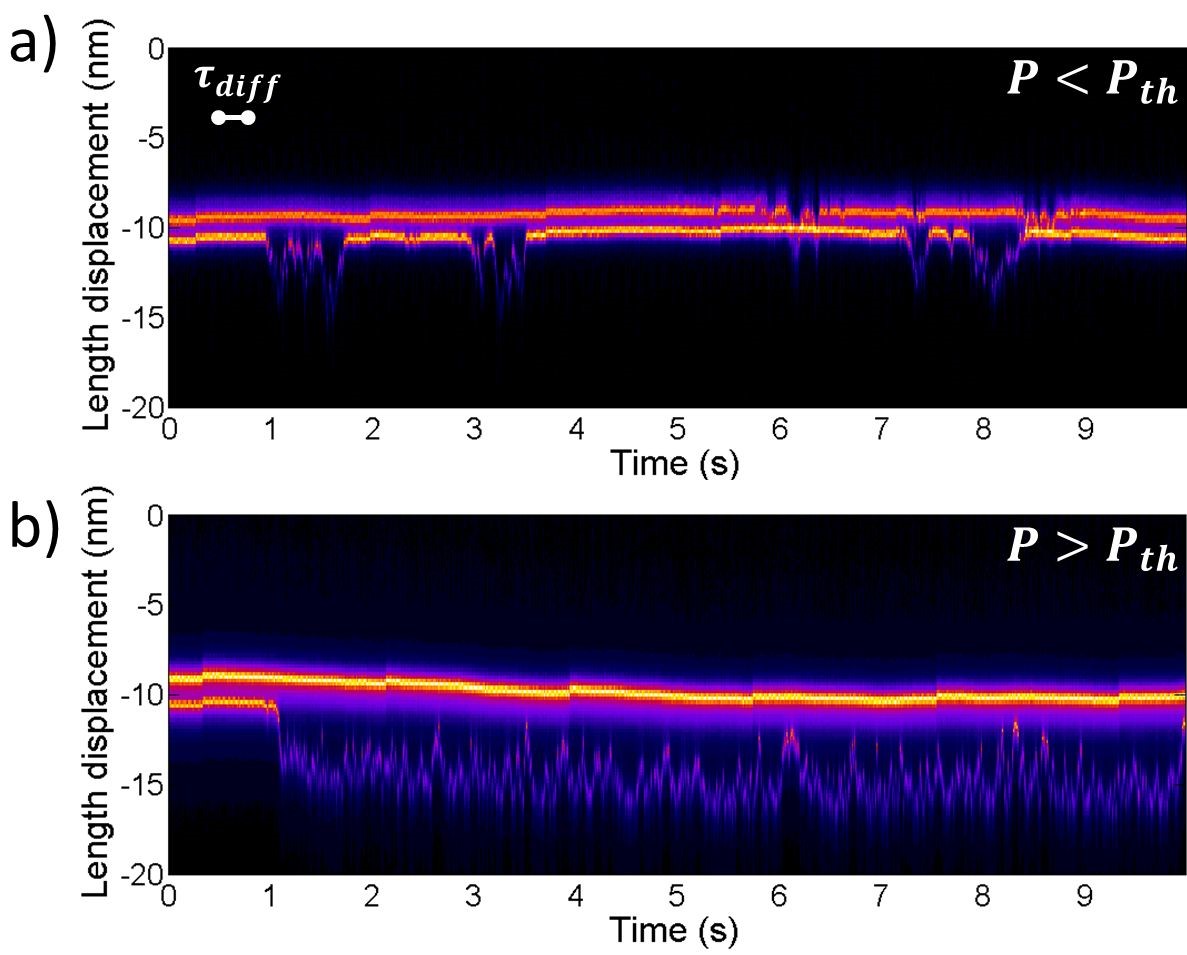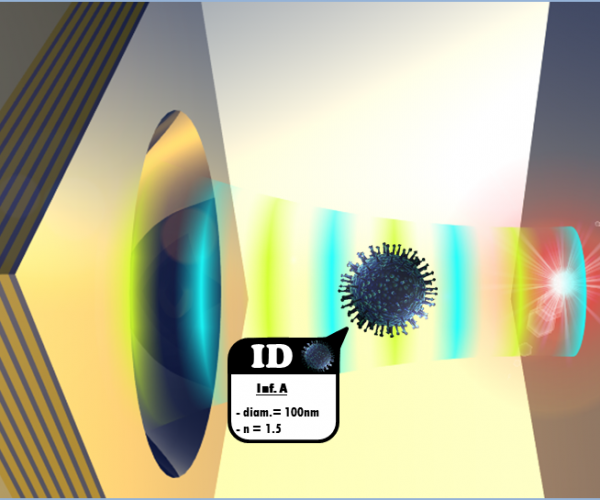Nanoparticle and chemical sensing with optical microcavities
Open cavities provide enhancement and control of optical fields on the scale of a cubic wavelength, and so offer great potential for sensing applications. We are investigating the sensing of nanoparticles and chemicals as they flow through the cavity in a fluid, by recording tiny changes in the refractive index or the optical losses in the cavity. We can also make use of optical forces exerted by the confined field to trap nanoparticles, enabling us to study them for extended periods before releasing them (Fig 1).

These sensors could potentially be used for biomedical research, medical diagniostics and environmental monitoring. To explore commercial application of the sensors we are spinning out a company, Oxford HighQ.

Recent publications and presentations
A. A. P. Trichet, P. R. Dolan, D. James, G. M. Hughes, C. Vallance, and J. M. Smith, Nanoparticle trapping and characterization using open microcavities, Nano Lett. 16, 1672 (2016).
C. Vallance, A. A. P. Trichet, D. James, P. R. Dolan, and J. M. Smith, Open-access microcavities for chemical sensing, Nanotechnology, 27, 74003 (2016).
A. W. Powell, D. M. Coles, R. A. Taylor, A. A. R. Watt, H. E. Assender and J. M. Smith, Plasmonic Gas Sensing Using Nanocube Patch Antennas, Advanced Optical Materials 4, 634 (2016).(rear cover image)
A. A. P. Trichet, P. R. Dolan, D. M. Coles, G. M. Hughes and J. M. Smith, Topographic control of open-access microcavities at the nanometre scale, Optics Express 23, 17205 (2015).
A. A. P. Trichet, J. Foster, N. E. Omori, D. James, P. R. Dolan, G. M. Hughes, C. Vallance, and J. M. Smith, Open-access optical microcavities for lab-on-a-chip refractive index sensing, Lab on a Chip 14, 4244 (2014).